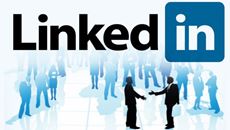- Delivery Method Online
- Professional Certificate
- 24hrs Suggested Study Time
- 3 Months Access
- Tutor Support
- Study On Any Device
- 3073 Students
Powerful Resume Writing

Discover the secret to transforming your tired, boring resume into a powerful tool that will get you interviews.
Create an effective resume or improve the one you already have. Transform your resume into a powerful tool that will get you interviews. This workshop will lead you through a self-assessment series so you will have extensive knowledge about the product you are marketing YOU! Learn different resume formats and the advantages and disadvantages of each. Write an employment objective that shows potential employers that you have direction. Make the most of your work experience. Know what to reveal in a resume, and what to keep to yourself. Learn to overcome gaps in work history and age discrimination. Discover how to use references to your advantage. This course includes the use of online resumes and Internet Resume Secrets. This course is invaluable for anyone who wants to create their own resume, or learn how to write resumes and cover letters for profit.
Courses are delivered to you through expertly executed lessons, online instruction and interaction with like-minded students. Our courses are designed to deliver all of the benefits of studying in a classroom whilst giving you the flexibility to study at a time and place to suit your needs. You can access your classroom 24/7 from any device with an internet connection.
This course has a 3 month duration. You'll complete comprehensive lessons, quizzes and assignments before submitting your final exam at the end of the course to achieve your certificate. Courses must be completed within the 3 month access period.

Stephanie Donaldson
Stephanie Donaldson is a member of the National Resume Writer's Association and has been writing resumes for the past 20 years. Stephanie earned a bachelor's in English from St. Lawrence University and a master's in business administration from C... Read more
Read Stephanie Donaldson's ProfileFrequently Asked Questions
What people are saying about our courses
The Learning Environment
From the moment that you enrol in the Powerful Resume Writing you will become an integral part of our learning community. You'll find yourself with the freedom to learn at a speed that suits you, on any device, from anywhere in the world. Achieving your career goals no longer has to mean compromising family and work commitments.
Ready to get started?
Enrol NowOur Values
Learn At Your Own Pace
We believe in personalised learning. That's why we provide all the tools and support you need to succeed at your own pace. With flexible learning, you'll stay motivated and retain more information. Plus, you can balance your studies with work and family commitments to make your dreams a reality.
We Won't Break The Bank
Education should be accessible to anyone who wants to learn. That's why we offer some of the most competitive prices in the industry with payments plans for just $25 per week. Investing in your future is a smart choice and doesn’t have to break the bank.
Industry-Led Courses
There's no better way to learn than from experts with years of experience in your field. That's why each of our 200+ industry-led courses are designed to give you a real-life perspective on your industry. With our expert mentors, you'll learn from people who have a wealth of knowledge and experience, and who are passionate about sharing it with you.
Get The Personal Support You Deserve
At Vibe Learning, we're real people who are dedicated to providing you with personal support every step of the way. Our industry experts are not only professional and knowledgeable but also incredibly passionate about sharing their expertise with you. With their guidance, you'll gain invaluable insights and practical knowledge to help you succeed.
Still looking?
Check out the following courses related to Powerful Resume Writing:






